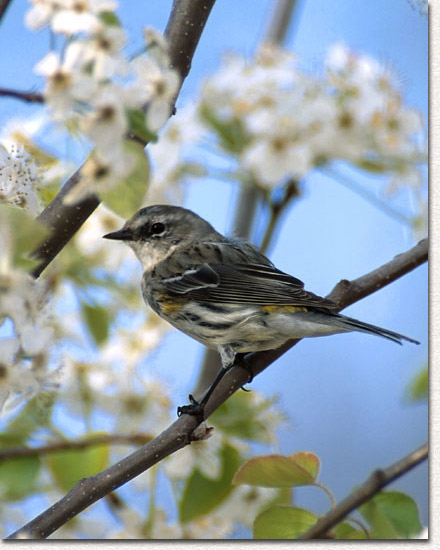| Description:
5-6" breeding male dull-bluish above streaked with
black, breast and back blackish, rump, crown and small area
at sides of breast yellow, variations in east-west, females,
young, and fall males streaked gray-brown and always have
yellow on rump and white spots on tail |
Habitat:
Open coniferous forests or mixed woodlands, forest edges, clearings, spruce bogs, thickets. Previously two separate species: Myrtle Warbler of the east (white throat) and Audubon's Warbler of the west (yellow throat). |
| Nesting:
4-5 white eggs spotted and blotched with brown, in a
bulky nest of twigs, rootlets and grass lined with hair and
feathers and placed in a conifer |
Range:
breeds from Alaska, Canada to Mexico in west, east
to New York, Maine, winters from southern part of breeding
range to tropics |
| Voice:
a thin buzzy warble, and a sharp chek |
Diet:
Tends to be more insectivorous in west than in east; berries of shrubs, especially in winter. |

